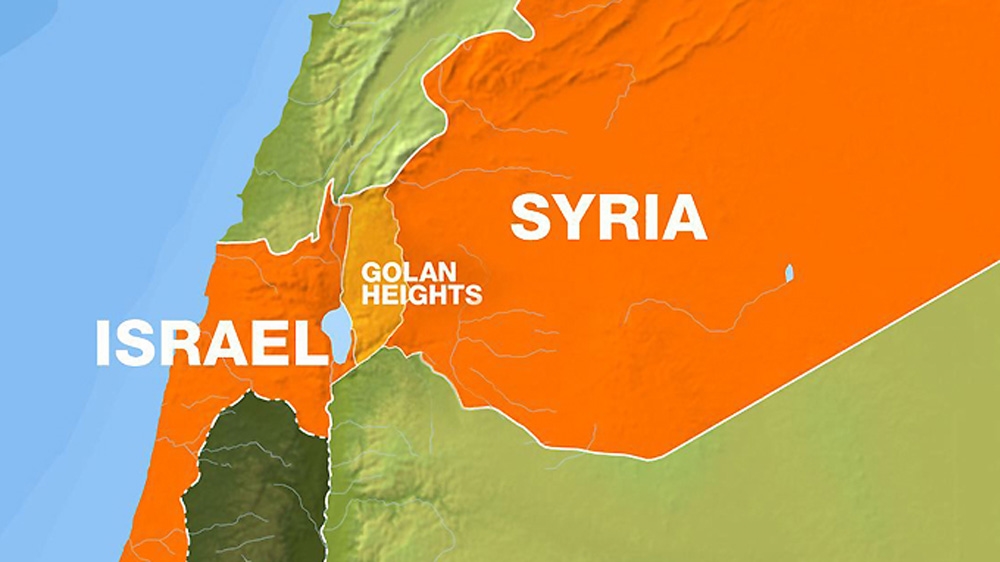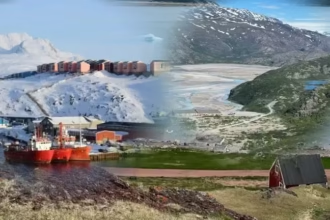The Golan Heights is one of the foremost disputes on the Middle Eastern peninsula. The Golan is a mountainous area that was part of southwestern Syria until 1967, when it came under Israeli military occupation during the Arab-Israel war. Later, in December 1981, Israel unilaterally annexed the part of the Golan it held. The area of Golan is surrounded by the Jordan River and the Sea of Galilee on the West, Mt. Hermon on the North, Wadih Al-Ruqqd on the East, and the Yarmouk River on the South.
Geographically, regarding the dispute over Golan Heights territories, the world recognized the Green Line, also referred to as the pre-1967 border or the 1949 Armistice Border, as the demarcation line set out in the 1949 Armistice Agreements between the state of Israel and its rival neighbors (Egypt, Jordan, Lebanon, and Syria) after the 1948 Arab–Israeli War. However, after a 6-day war in 1967, Israel captured the Golan Heights, changing the whole political border situation in the area.
Strategic Importance of The Golan Heights for Israel:
The Golan is 62 kilometers long, and at its widest point, it is just 25 kilometers wide, separating Israel and Syria. Mt. Hermon and Mt. Avitak play a vital role in monitoring the troop movements of Damascus sides. Moreover, the Damascus-Beirut highway, the seashores of the Sea of Galilee, and the Israeli-Lebanon border are also under monitoring from Israeli-established checkpoints.
The geopolitical situation of the Golan Heights makes it very advantageous for Israeli interests. One third of the state’s water supply comes from this region. It is strategically important for the IDF to command high ground. Moreover, its harshest rival’s capital, Damascus, is just 60 kilometers away from the region. According to multiple Jewish texts, the area is sacred and holy for the Jews. In Biblical times, the Golan Heights were known as “Bashan.”

Six years later, in an attempt to recapture its territory, Syria went into war with Israel again with its Arab allies in 1973 but remained unsuccessful. On Yom Kippur, the Syrians overran the Golan Heights before being repulsed by Israeli counterattacks. After the war, a disengagement agreement between Israel and Syria established a United Nations buffer zone in the Golan Heights, monitored by a UN Disengagement Observer Force (UNDOF). Every six months following that, the UNDOF mandate was reinforced.
International Response and Criticism:
The issue was highlighted again when U.S. President Donald J. Trump announced his Middle East plan several years ago, in which he publicized that the Golan Heights belong to Israel and declared Jerusalem the capital of Israel. He did, moreover, defend Israeli Prime Minister Benjamin Netanyahu’s claim that the Golan Heights would “forever be a part of Israel.” The plan was largely criticized by the world, particularly the Arab nations. Kuwaiti parliamentarian Marzouq Al-Ghanem was filmed throwing Trump’s Middle East peace plan into a dustbin at an Arab Parliamentary Union meeting. He further stated: “The so-called Deal of the Century should be thrown in the dustbin.”
Presence Of Jewish Settlements and Arab Natives:
There are around 30 Israeli-sponsored Jewish settlements in the disputed area of Golan, which are home to an estimated 20,000 settlers, despite the fact that these settlements are considered illegal under international law, although Israel rejects this. The Jewish settlers live alongside some 20,000 Syrians, most of whom are Druze Arabs, who did not migrate when the Golan was captured and still hope that one day they will be reunited with their separated families under Syrian authority and get centrally organized.
As they fight to preserve their culture under Israeli occupation, members of the Druze community in Golan keep raising Syrian flags outside their homes. After annexing the Golan in 1981, Israeli authorities offered Israeli citizenship to local residents, but the offer was widely rejected by the region’s substantial Druze community.
Impact of the Syrian Civil War and Israeli Concerns:
The border line dispute turned violent when a Syrian civil war broke out, and multiple attacks and aggressions were directed by rebels towards Israel from the Golan Heights area, according to Israeli authorities. Moreover, tensions increased in the Golan after the start of the Syrian civil war. Civilian and armed casualties have been reported in limited confrontations between the Syrians and the IDF since 2012. Understanding the relation between the Syrian civil war and the Golan Heights is important because, just a few miles away from the Heights, the war between ISIS and Iran-backed and Syrian government-supported Hezbollah is underway, while the Iranians vow to tear down Israel. The victory of Bashar’s regime means more threats to the northern Israeli territories. From 1948 to 1967, Syria controlled the Golan Heights. It used the area as a military stronghold from which Syrian troops could target and observe any military or civilian activity inside Israel.
However, when Israel annexed the area, it started investment and welfare programs for the people of this area. Moreover, according to the Jewish Virtual Library’s report, the government is planning to make a big development plan for the prosperity of the Golan, making million-dollar investments and setting up new villages and towns for more settlers.
Development Under Annexation:
At the end of 2021, the government announced its intentions to invest in the development of the Golan Heights and double its population during the following ten years. Approximately $324 million was set aside for building around 7,000 apartments and houses for approximately 23,000 new families. More than $50 million will be spent on improving infrastructure and public transportation.
Another $53 million was assigned for regional development, including the tourism industry, which is expected to generate about 2,000 jobs in the tourism industry, agriculture, new hotels, and the commercial and civilian sectors. Additional investment will be made to turn the Golan Heights into Israel’s technological capital for renewable energy.
The Status Quo Of the Golan Heights Issue:
Due to the lack of direct interaction or negotiation, both parties have stood by their own viewpoints without seeking a compromise or satisfactory resolution. As a result, the issue has remained stable since the annexation of the area. The Golan Heights issue has had its ups and downs. For instance, the Rabin-Peres government from 1992–96 was serious about negotiating with its counterpart. However, when Netanyahu came into power from 1996 to May, he coined the term “peace with Golan,” ultimately ending the peace process. A later election of Ehud Barak in 1999 revived the peace process between Syria and Israel, particularly regarding the annexed area of Golan Heights. However, multiple factors within Israel could determine any decision taken by the government, and as a result, the decision could be undermined or neglected. That is how the issue has remained stable to this day.
The Dispute: “With No Resolution in Sight”:
If Israel withdrew from the Golan and had to relocate its facilities to the lowlands of the Galilee, they would lose much of their strategic effectiveness. Consistent settlements and investments from Israel in the Golan Heights have set apart the disputed area from Syria. Both parties have their own desired solutions, but no one has been able to resolve the dispute so far. The territory is regarded by the international community as Syrian sovereign territory, rejecting Israeli claims to ownership of the area.







